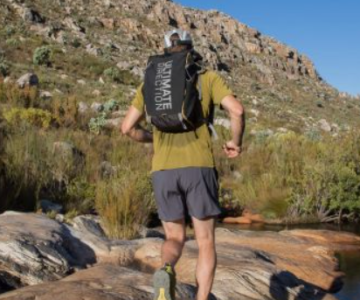If you’ve been hearing a lot about trail running and wondering what all the fuss is about, you’re not alone. Maybe your friends are trying to convince you to join them, sharing tales about reconnecting with nature and exploring the outdoors. While it might sound like just another fitness trend, trail running offers some significant advantages over road running. In this post, we’ll dive into the differences between these two types of running, from the terrain to the gear, and why you might want to give trail running a try.
Injury Risk: Which One is Easier on the Body?
One of the biggest perks of trail running is that it’s gentler on the joints compared to road running. The natural surfaces of trails are softer than hard pavement, meaning there’s less impact on your knees and hips. The constantly changing terrain forces you to vary your stride and foot strike, which helps prevent the repetitive strain injuries that are common in road running, where the surface and movement tend to be uniform.
Muscles Worked: A Full-Body Workout
Trail running isn’t just about putting one foot in front of the other – it’s a full-body workout. The uneven surfaces of the trail require your body to engage a wider range of muscles. Your core works overtime to stabilize your body as you navigate obstacles like rocks and roots. Plus, if you’re running on steep, technical trails or using trekking poles, you’ll be recruiting even more muscle groups. In comparison, road running tends to target primarily your legs, making trail running a more well-rounded fitness activity.
Cadence & Speed: Slower, But More Intense
Trail running forces you to slow down. You’ll often have to step over obstacles or take a slower, more controlled pace to maintain balance. Uphill sections can be steep enough that you might even need to walk instead of run. When you do run, you’ll likely adopt a shorter stride to better navigate uneven ground. While road runners focus on speed and pace, trail runners embrace a more methodical rhythm, prioritizing stability and control over fast times.
Terrain: Flat vs. Hilly
The difference in terrain is one of the most obvious distinctions. Road runners stick to smooth, paved surfaces that allow for speed and precision, often with the goal of setting a fast time. In contrast, trail runners thrive on rugged, hilly terrain – think winding paths, steep inclines, and variable landscapes. The more hills and elevation gain, the better. Road runners are usually aiming for a personal best, while trail runners are more focused on the experience than the time it takes to finish.
Outdoor Skills: More Than Just Running
While road runners primarily focus on pacing, hydration, and nutrition during their runs, trail runners need to be prepared for a wider range of challenges. When you’re running in remote areas, it’s important to know how to navigate, perform basic first aid, and prepare for changing weather conditions. Trail runners often relish the opportunity to learn these outdoor skills, making the sport more adventurous. Road runners, on the other hand, tend to have fewer considerations once they hit the pavement.
Apparel: Comfort Over Fashion
Another key difference is the apparel. If you’ve ever observed a road race, you’ll notice that participants often sport highly coordinated outfits and a lot of tech gadgets. There’s an emphasis on speed and appearance, with runners checking their devices even before the race starts. Trail runners, however, tend to care less about matching their gear. You might see a runner sporting a mismatched kit, compression socks, and a scruffy beard – and they wouldn’t have it any other way. For trail runners, comfort and functionality always come first.
Fuel: Nutrition for the Trail
The food and hydration strategies also differ between road and trail runners. Road runners often rely on quick, easily consumable nutrition like gels or chews to maintain energy levels. Trail runners, by contrast, enjoy a more varied selection of snacks. At aid stations, you’re more likely to find cookies, peanut butter sandwiches, or gummy bears rather than a gooey energy gel. After a race, road runners might refuel with a carefully planned meal, while trail runners are more likely to celebrate with a hearty meal, whether it’s a burger, burrito, or a craft beer.
The Takeaway: Adventure vs. Speed
At its core, the difference between road running and trail running comes down to the experience. Road running is often about pacing, times, and setting new records, while trail running is more about the adventure, exploration, and enjoyment of nature. If you’re looking for a new challenge that allows you to disconnect from the hustle and bustle, trail running offers just that. Whether you want to explore rugged trails, push your limits, or simply enjoy the serenity of nature, trail running has something for everyone.





